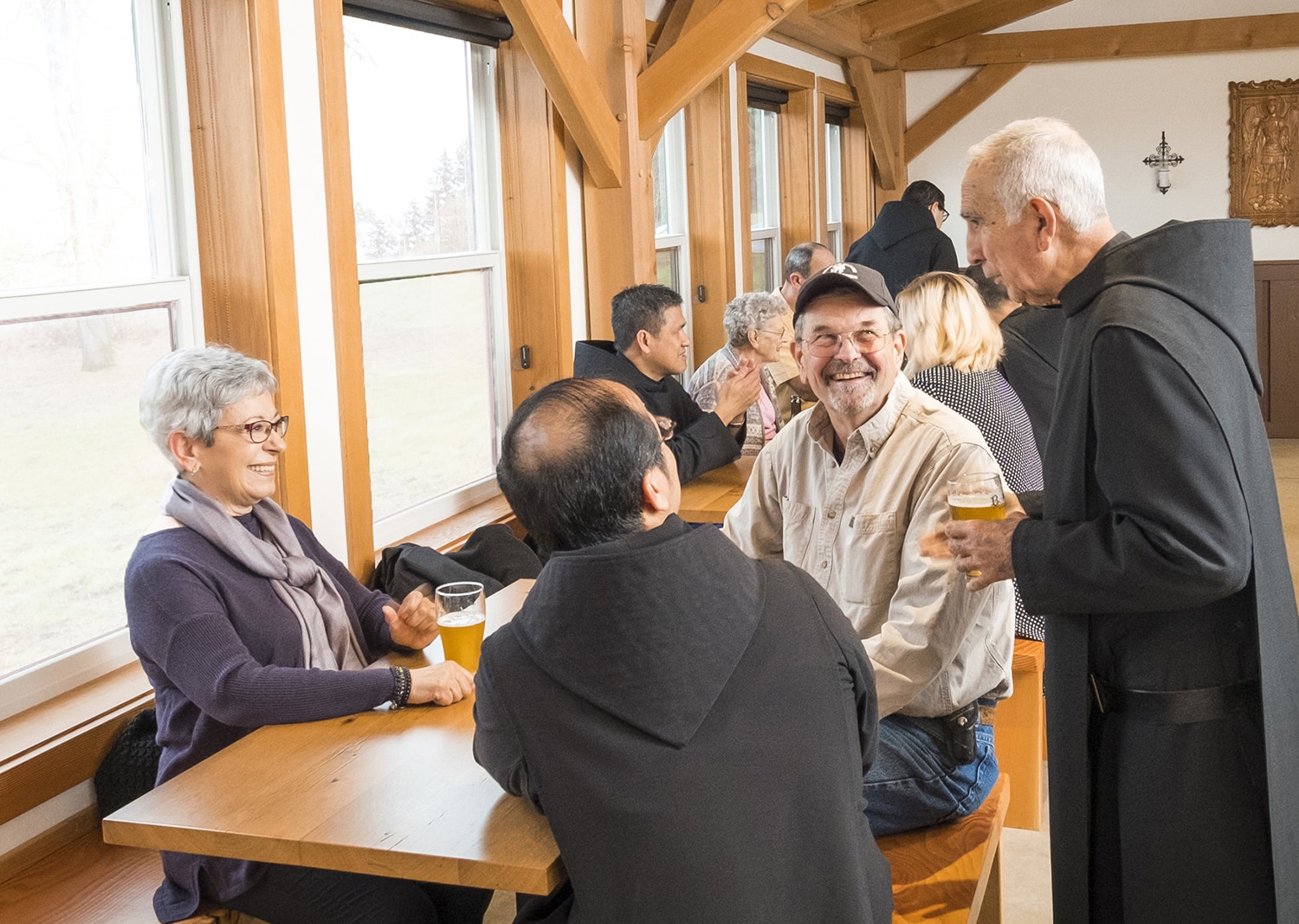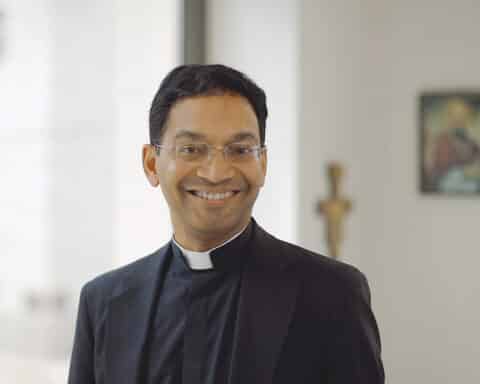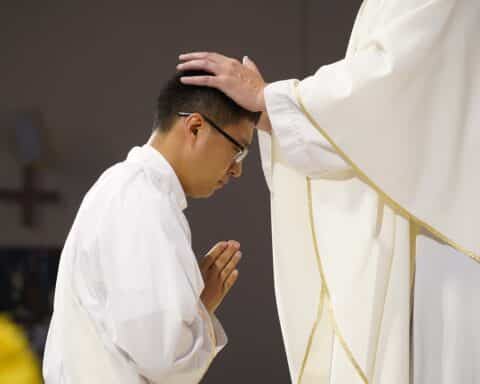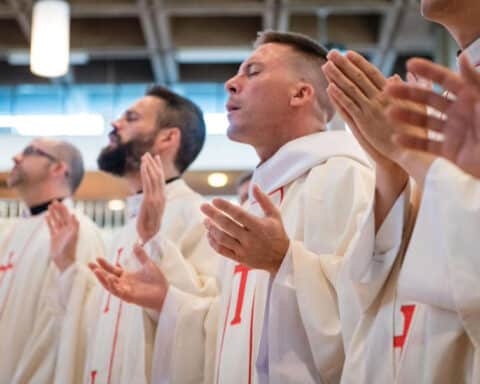St. Arnulf of Metz is credited with saying, “From man’s sweat and God’s love, beer came into the world.” The famous wordsmith G.K. Chesterton said, “In Catholicism, the pint, the pipe, and the Cross can all fit together.” In the idyllic hills of Oregon’s Willamette Valley, the Benedictine monks of Mount Angel Abbey are putting these principles into practice.
The mission of the monks at the Benedictine Brewery is printed right on the label of every bottle: “Taste and Believe.” This is not simply a brewing business, and it’s so much more than a money-making venture for the monks of Mount Angel. It is an opportunity for evangelization.
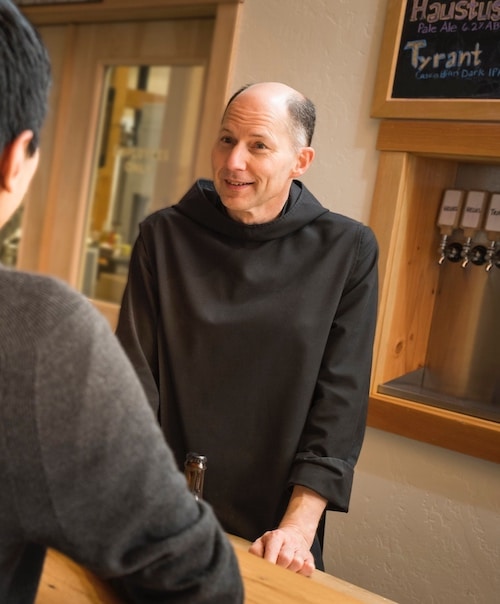
The Benedictines that grace the hilltop at Mount Angel came to the United States from Engelberg (which means “Mount Angel”) in Switzerland, and their first priory was founded in 1882. The priory was elevated to an abbey in 1904 by Pope St. Pius X. By 1889, the archbishop of Oregon City asked the monks to establish a seminary on the grounds, and they happily obliged. Today, Mount Angel Seminary serves around two dozen dioceses and religious orders.
The community at Mount Angel has faced many challenges over the years, including two catastrophic fires. But the fervor of their faith, their commitment to hard work and their evangelizing zeal have never been greater.
Father Martin Grassel, OSB, is general manager and head brewer at Benedictine Brewery. He entered Mount Angel Seminary in 1995, and has been there ever since. Since his priestly ordination in 2004, he has served the community in many roles, and is currently the procurator of the abbey, a position which is the equivalent of chief financial officer. He says that the beer brewed at Mount Angel is “crafted for a higher purpose.” At every stage in the brewing process, the beer receives a priestly blessing, and the monks — in full habit — operate the Taproom at the bottom of the hill.
A holy history
St. Benedict lived from about A.D. 480 to 547. He is the founder of western monasticism, and the Rule of St. Benedict, which he wrote to guide the lives of monastic communities, is still in use by a great number of Benedictine (and Benedictine-inspired) monasteries around the world. Benedictine life is one of hard work, study and contemplative prayer — when one pictures a Benedictine monastery, he usually envisions a fairly ascetic lifestyle. But the beer does not clash with that lifestyle. The monks themselves only partake on special occasions, and then only in moderation. This is not a place for drunkenness or debauchery but an opportunity to enjoy the artistry of brewing, to enjoy the fruits of God’s creation.
Some might object that drinking alcohol is sinful, or that it can easily lead down the path to sin. Chesterton said that we should thank God for beer and burgundy by not drinking too much of them — in other words, moderation and temperance. This would be the biblical view, as well, and is articulated in the Catechism of the Catholic Church: “The virtue of temperance disposes us to avoid every kind of excess: the abuse of food, alcohol, tobacco, or medicine. Those incur grave guilt who, by drunkenness or a love of speed, endanger their own and others’ safety on the road, at sea, or in the air” (No. 2290). Jesus drank wine and even turned water into wine. The consumption of alcohol is by no means sinful in and of itself; but intemperance and drinking without moderation can be sinful and can lead to other sins.
Monks and brewing have gone hand-in-hand for centuries. In fact, monks played an important role in the development of Western brewing as a whole.
In the Middle Ages, monks became the standard large-scale brewers in Europe, for two main reasons: First, they had the resources to build breweries; and second, the monastery farms provided the agricultural products necessary for brewing. At one time, there were as many as 600 monastery breweries in Europe. Monks were also responsible for standardizing cleaning and sanitization practices in brewing, were the first to practice lagering, and are the first known brewers to use hops.
In the earliest days of the Mount Angel Abbey, brewing was part of the monks’ work. It was probably not a commercial enterprise, and the beer was most likely consumed by the monks and their guests. The founding prior, Father Adelhelm Odermatt, wrote in his diary on Nov. 26, 1885: “The monastery property now consists of the dryer, the cheese house, the carpenter shop, the cider press, the grinding mill, a ‘Locomotivehall’, a fruit house, a sheep shed, horse and cow shed, hog pens, the hay and straw sheds, a residence for workers, a big wood shed, 2 smoke houses, the bakery, the blacksmith shop, beehouse and the Guest house and the brewery.”
Brewing in the 21st century
The Benedictine Brewery was legally formed in 2013, and construction on the Taproom began in 2017 at a community timber raising. The timber for the building’s frame was harvested from the monastery’s Douglas fir tree farm. The Taproom officially opened on Aug. 31, 2018.
There are not many breweries in the United States that are owned and operated by monks. St. Benedict, the founder of the Benedictines and father of Western monasticism, thought that monasteries should be self-sufficient, farming their own food, earning money through industry. Father Grassel saw a need for a new source of revenue for the Abbey, and the monks’ commercial brewing enterprise was born.
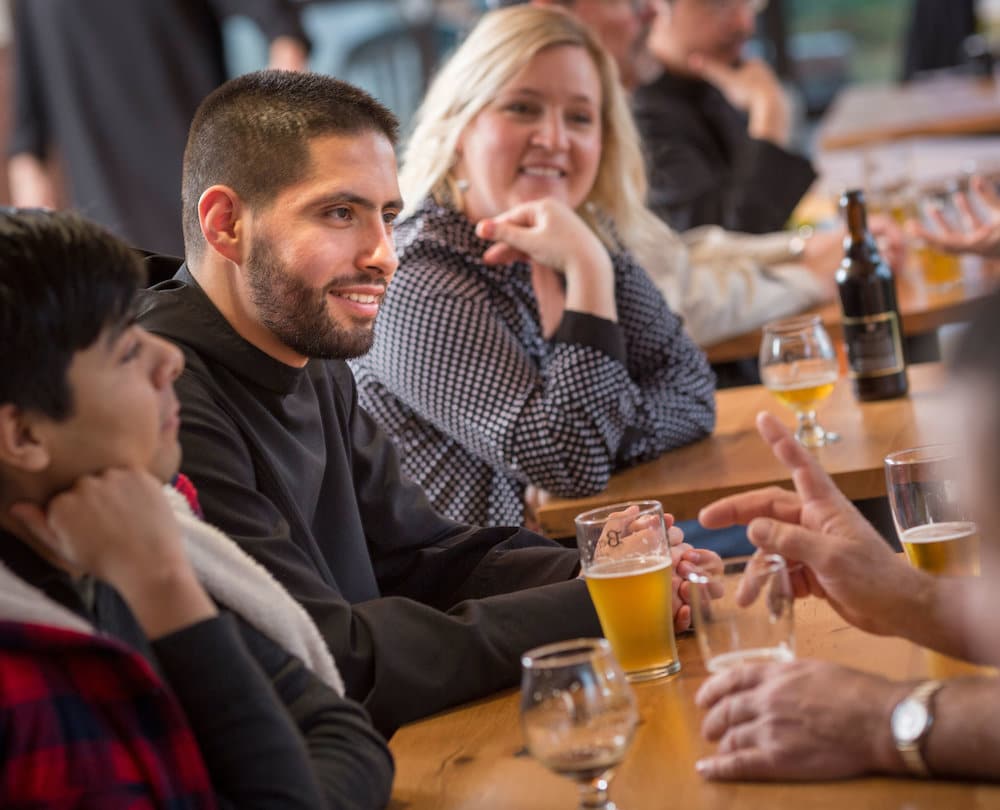
The Benedictine Brewery offers 10 varieties, with distinctively Catholic names: Dark Night (a reference to St. John of the Cross’ famous “dark night of the soul”), Black Habit (a reference to the black robes that make up the Benedictine religious habit), St. Benedict, St. Gabriel, St. Raphael, Hairshirt and more. The beer is available by the bottle and on tap, but unfortunately they are not able to ship the beer. It is only available for purchase at the brewery itself.
Benjamin Franklin supposedly (perhaps apocryphally) said that “Beer is proof that God loves us and wants us to be happy.” Whether or not Franklin actually uttered these words, the monks at Mount Angel would certainly agree — and so would those who “taste and see.”

